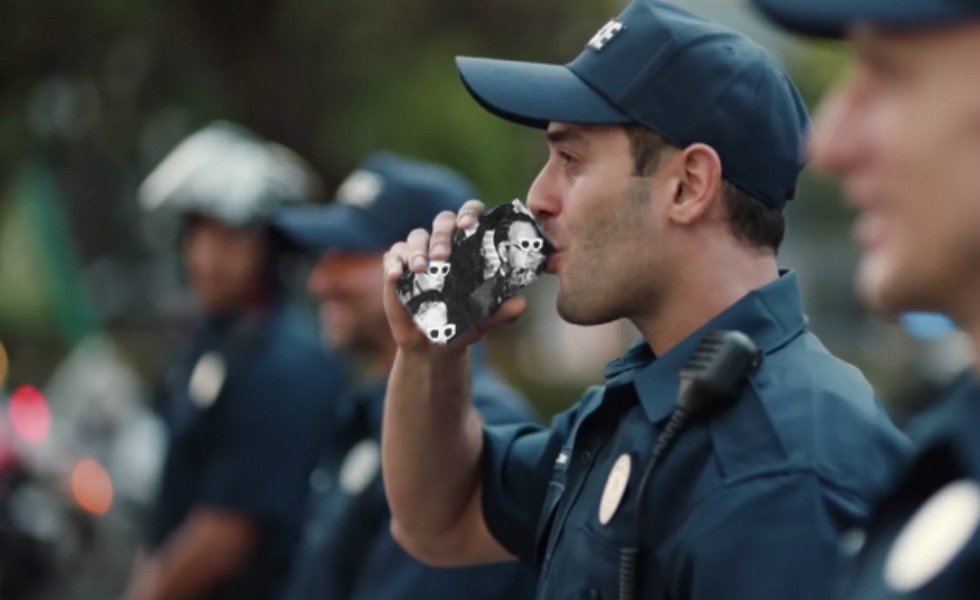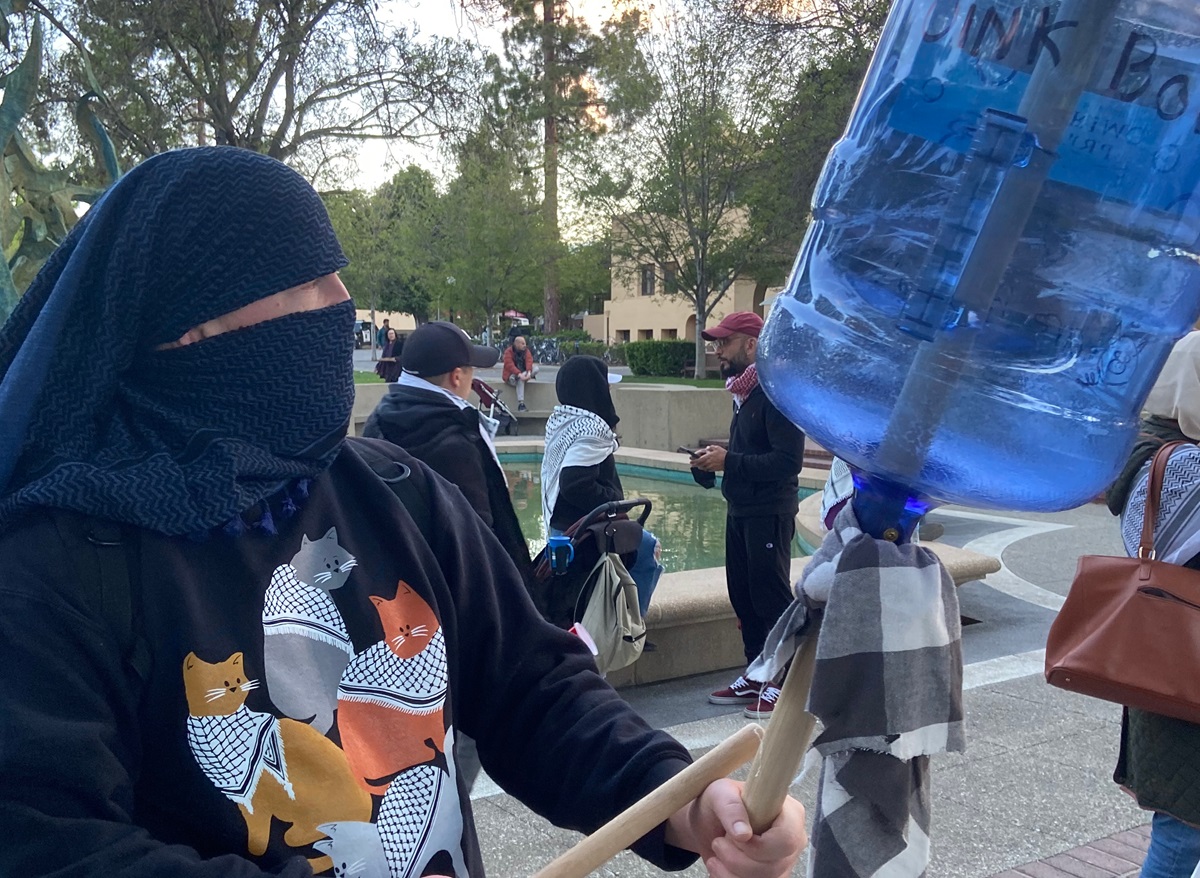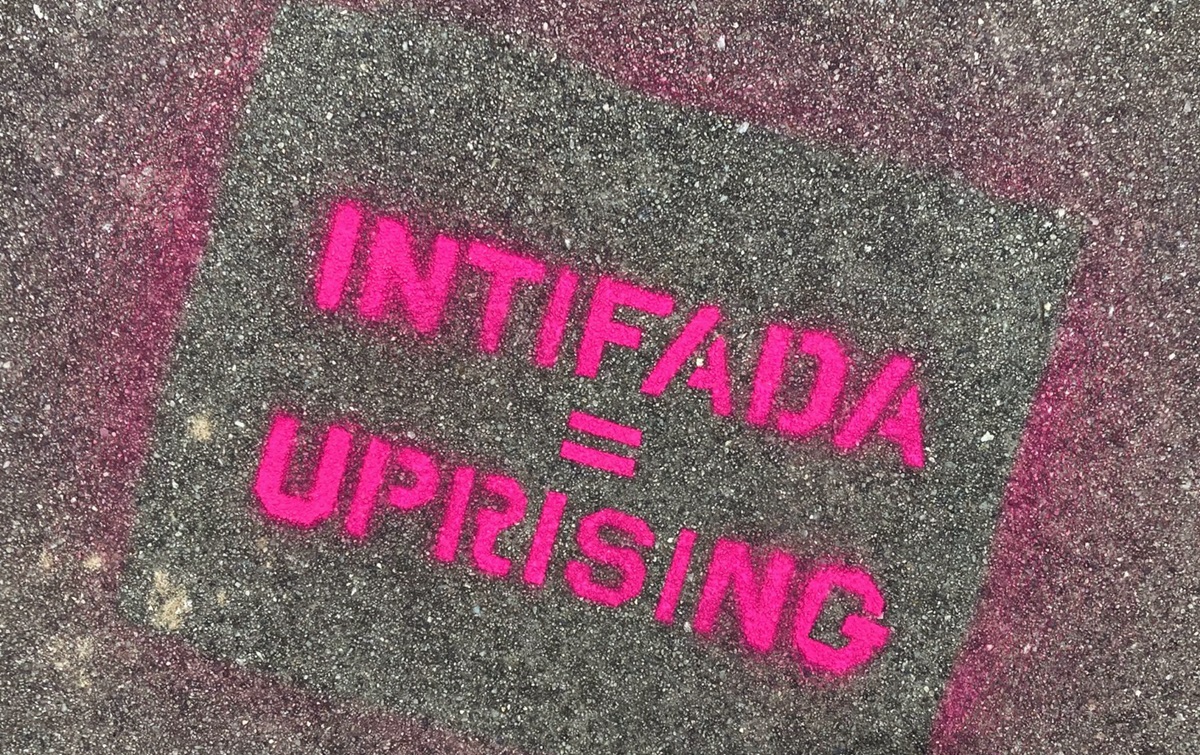
This week, the internet has been raving over an atrocious new Pepsi commercial, in which the company attempts to portray model and Kardashian sister Kendall Jenner in protest mode.
Besides the lowball attempt to feed off of the recent wave of popular protests, the video itself takes the usual levels of ethnic tokenization and uses them to push a narrative asking for “peace and unity” with cops.
Jenner is first seen modeling in a doorway, surrounded by aides (who she treats like servants), and then leaving her position of luxury and rulership (as well as her hair color, as she tosses off her blonde wig) to spontaneously join a crowd of pro-peace individuals. They then unite in celebration when Jenner offers a non-threatening young male cop a can of Pepsi as a conciliatory gesture towards the state/police.
As exceptionally absurd as this commercial may be, let us avoid falling prey to the impulse to laugh off this sort of media production as a fluke. As others have pointed out, this media has political intent, and yes, it is both malicious and aimed at mass persuasion.
Meg Sri put it aptly in this piece:
Pepsi’s actions are merely the logical behavior of an industry that aims to capitalize off of a newly invigorated political climate, where dissent has become commodified and extremely profitable.
Consider the slew of carefully coded Super Bowl Ads that were celebrated as being anti-Trump by the left, but whose creators refused to have the courage to even claim they had any political intent. Or the way Dove and Victoria’s Secret have appropriated the body positivity movement. Or Nike’s embrace of female athletes wearing the hijab. Or Dior’s $710 “We Should All Be Feminists” t-shirt. Or Twitter’s “#staywoke” t-shirt. Or Gucci’s “queercore” line of capsule shoes, each costing over $1000 a pair. Or indeed the general history of advertising that has tried to take revolutionary protest, and make money off of it.
All of these ad and products do the same thing: they empty popular protest movements of their political content, and instead use them to achieve their own ends—to sell us stuff (often made under exploitative conditions). They present a world where protests are filled with beautiful people, are glamorous and easy and non-divisive, and have none of the difficult, ugly, violent tensions that burn alive in protest movements amongst us today. In Pepsi’s capitalist fever dream, the police just needed a Pepsi handed to them by a white woman in order to stop shooting twelve year old Black children.
Did you already have an idea in your head about what a resistance should look like? Well, the messaging of this video was engineered, in part, to dilute that image, and to ride the wave of recent popular resistance for its own capitalist benefit. But while the Jenner video is a very explicit example of the way mass-produced media attempts to turn its spectators into weapons of ruling class ideology, other times, it is not so explicit.
Let’s address the two main elements of this video: the messaging of the protesters before Jenner, which was unilaterally in support of “peace,” and the messaging when Jenner joined in, which was the catalyst for a perceived unification of the crowd with the police.
For this commercial, the challenge Pepsi needed to solve was finding a way of presenting a version of resistance that could bolster their brand, and ultimately the system that supports it. So they settled on messaging to appeal and create the ruling class’ model customer for protest activity: “peace police”.
That’s likely because peace police ideology is engineered not through a comprehensive study of pacifism, but by these attempts of mass media to incorporate forms of resistance into its popular narrative and dominant culture. The only way this can be done is by weaponizing resistance against itself through this process of “recuperation.”
This is no mistake. They know protesting is being popularized right now because of Trump and his draconian policies, because Black Lives Matter called for an end to people of color being murdered by cops in the streets, because Occupy Wall Street said that capitalism is a time bomb ticking to explode.
Also the people in the ad itself are made up of young, professional millennials, from models, to musicians, to a photographer. They are depicted as people who are joining in on a ‘protest’ because it is something ‘fun’ and ‘exciting,’ with no context given as to why they would do this other than to be swept up in its youthful energy. This presentation reflects both the liberal ideology and neoliberal orientation held by the people that both made the commercial, (as well as their class position), as well as the kind of worldview they hope to normalize. This is opposed to what in reality is actually pulling in the vast majority of young people into social struggles; from fighting pipelines, to striking at fast food restaurants, to fighting police, to punching Nazis – the actual physical need to change people’s material conditions and confront the world of white supremacist, capitalist society.
But all of these elements must be erased, and of course, there was no mention of Trump at all in the add, nor of the anger people have directed towards him and his cronies. To present a coherent cause for demonstration would disable the ability to commodify the image of demonstration itself.
For Pepsi and all ruling class ideologues, the image of street demonstrations exists ideally as a group therapy session—something to go to for catharsis, and then to leave permanently, ideally with a Pepsi in hand.
The internet has raged long enough at this commercial for the mainstream media to pick up on it, but for them, no word seems fit to accurately describe what can be seen in this video.
Some were calling this an “appropriation,” adapting it from its recent usage of “the stealing of cultural traits specific of a racial or ethnic groups by an oppressor racial or ethnic group.”
While there were elements of appropriation in this video, the grander appropriation by white individuals didn’t happen on camera but behind the scenes, from the owners and producers of the production who knew they could use the image of a multi-ethnic group and the feature of a young Muslim woman to weaponize an ideology of peace, love, and cop-hugging.
Others called it a “co-opt.” Likewise, as there were elements of co-optation in this piece as far as the image of protest goes, it is not complete enough of a term. To co-opt exists in the specific when talking about movements, as opposed to the idea of movements in general. As well, to co-opt implies that something has just been rendered useless, as opposed to being used brutally in opposition to its origin.
In reality, pieces like this have the power to appropriate, co-opt, and so much more.
This is why it may be important for radicals to refamiliarize with the usage of the term “recuperation” into our discussions on mass persuasion. A term which the Situationist International used to warn us about the ability of mass media (as used by the ruling class), to wage ideological warfare against the liberation of all people, through the adoption of revolutionary ideas and practices and the reversal of their intents and purposes.





